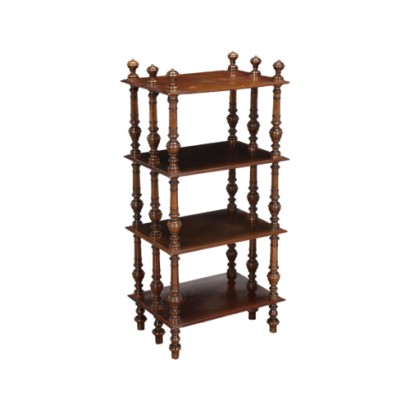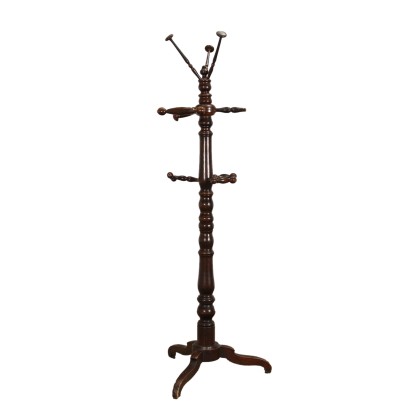Victorian Étagère Mahogany England XIX Century
Features
Style: High Victorian (1875-1900)
Age: 19th Century / 1801 - 1900
Origin: England
Main essence: Mahogany
Description
Victorian English mahogany étagère consisting of 3 shelves supported by 6 turned uprights.
Product Condition:
Product that due to age and usage requires restoration and resumption of polishing.
Dimensions (cm):
Height: 103
Width: 49
Depth: 35
Additional Information
Style: High Victorian (1875-1900)
The Victorian style was born at the time when Queen Victoria ruled, and is characterized by linear wooden furniture, of a basically dark color and possibly with a mahogany and rosewood finish.Find out more about the Victorian movement with our insights:
FineArt: Writing desk, Arthur Blain
Age: 19th Century / 1801 - 1900
19th Century / 1801 - 1900Main essence: Mahogany
It is one of the most precious and sought-after woods in cabinet making. It was discovered in Central America around 1600 and began to be imported to England in the 1700s. Much appreciated for its hardness and indestructibility, it became widespread following the blocking of walnut exports from France in 1720 and the consequent elimination of English import duties on mahogany from the colonies in America and India. The most valuable version comes from Cuba, but it became very expensive. At the end of the 18th century it began to be used also in France in Louis XVI, Directory and Empire furniture, its diffusion declined starting from when Napoleon, in 1810, forbade its import. It was generally used in the manufacture of elegant furniture, due to its characteristics and beautiful grain. Alternative proposals




















